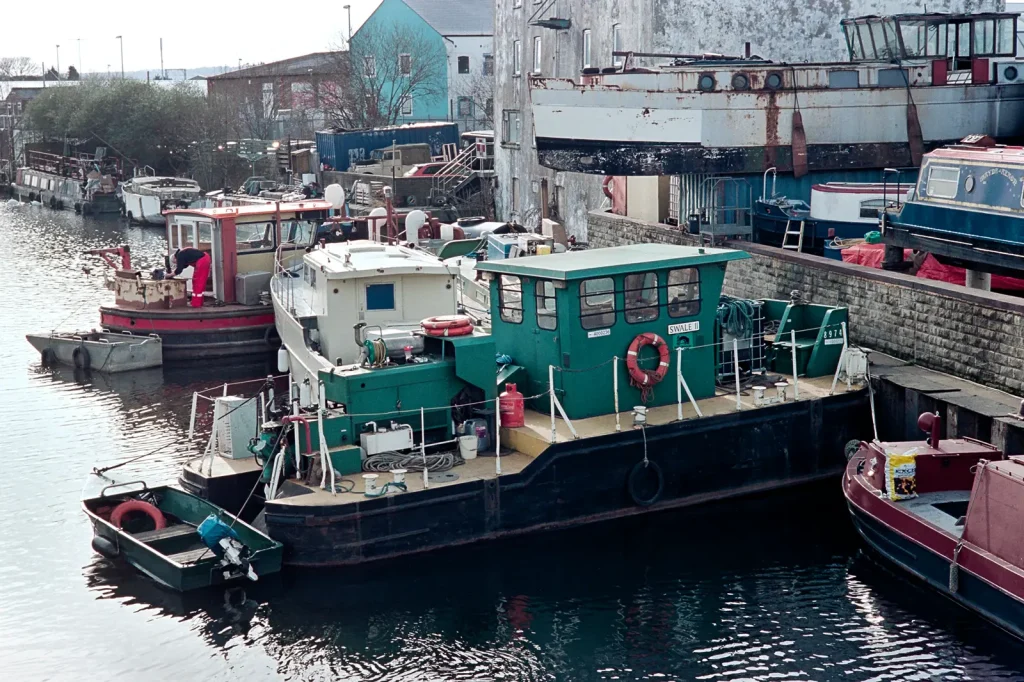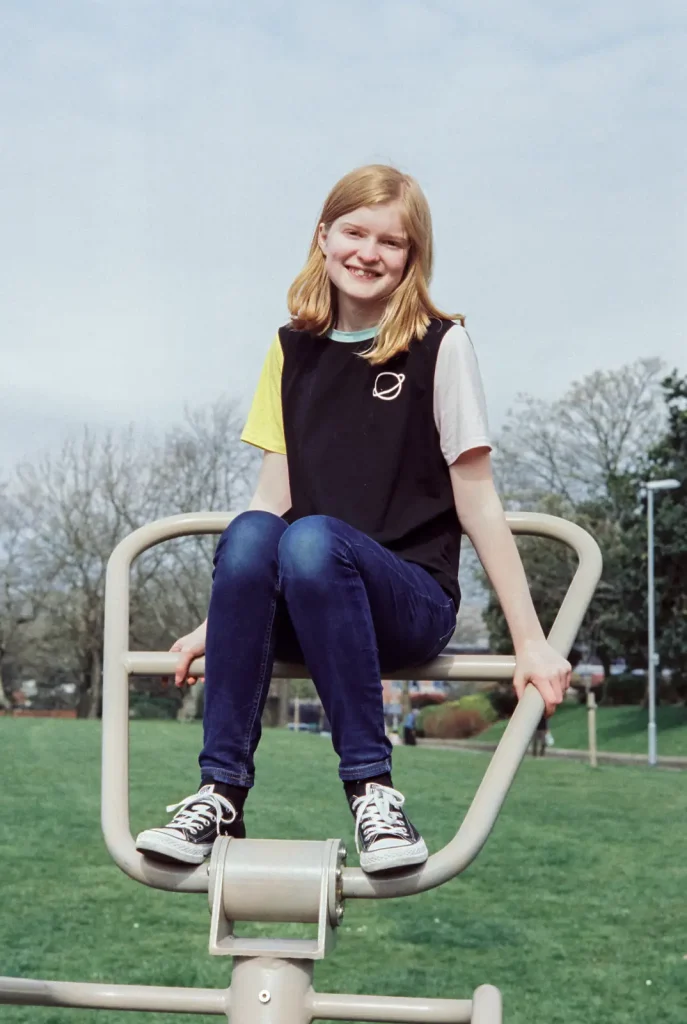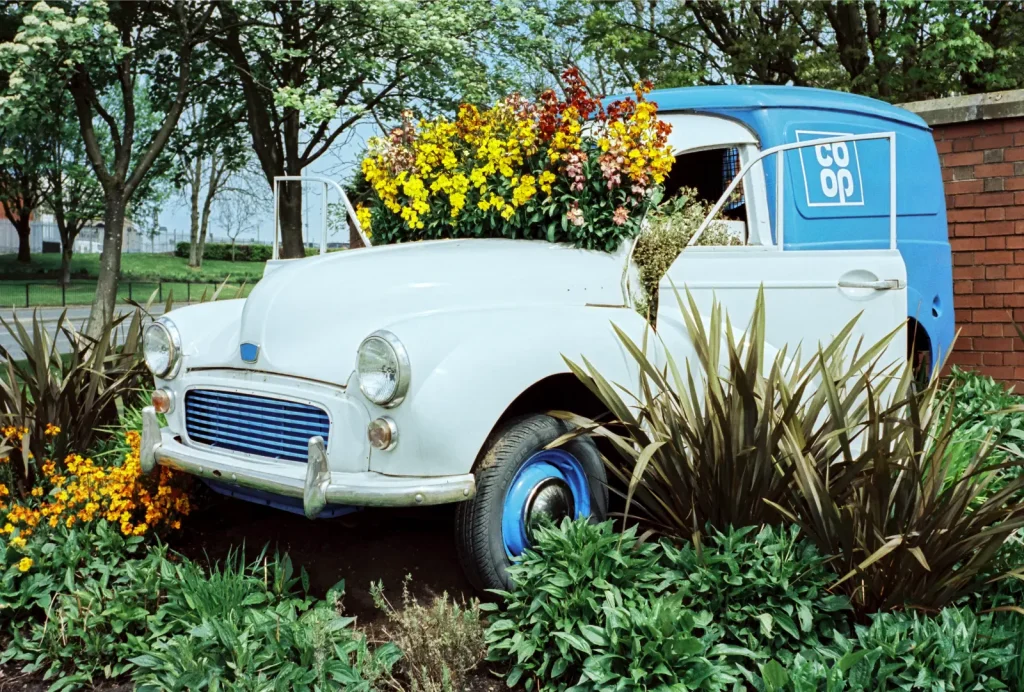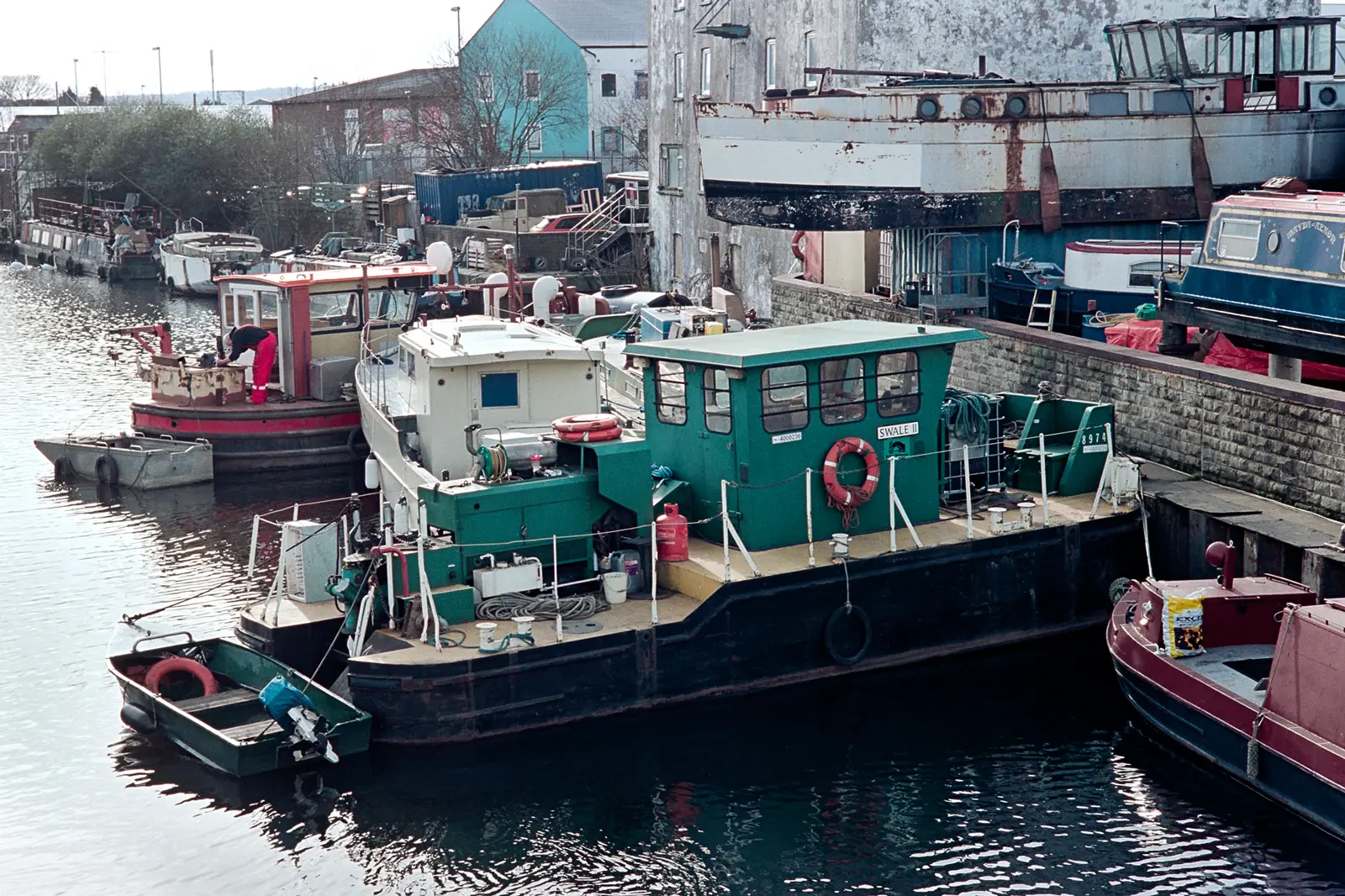A little while ago I tried some 35mm Cinestill 800 colour negative, which is Kodak Vision 3 500 Tungsten movie film with the Remjet anti-halation backing removed. Exposed at EI800 with an 85B filter for exteriors and processed in C41. The results were very promising, fine grain, nice colours but the halation on highlights was a problem for me. Perhaps the Kodak Vision 3 250D 35mm movie film would be equally as good? I bought some 35mm cassettes that had been loaded from a bulk roll for a trial. The cost of the cassettes was nearly half that of Kodak Portra films, my usual colour neg choice, a handy saving. The films were processed at two different UK labs, one roll was put through ECN2, the others C41, then high res scanned. All the rolls were mostly exposed at box speed for shadow detail at EI250, but I also over and underexposed some negs. The scans from both labs had a mild red cast, which could only be removed by slightly adjusting the red curve using Photoshop. Once adjusted it was plain sailing.
Please note that movie films must go to a lab that can handle Remjet backed films, most labs will refuse, or you can easily process it yourself. Remjet is a very heavy duty anti-halation backing applied to the movie film to help with the friction caused by the film moving at high speed through a movie camera. The backing must be removed in a pre-soak bath of baking soda or ECN2 pre-soak chemical. After soaking the backing sloughs off the film into a sticky mess. Once the Remjet is off the film, normal machine processing can proceed. The C41 lab was Exposure Film Lab, the ECN2 lab was Silverpan Film Lab.
Firstly the ECN2 images.




It became apparent that the speed of EI250 was too high for the film, it does not like underexposure in ECN2. The cathedral interior and person in the train images are very grainy, yet the robot and boat, exposed at EI125 exhibit fine grain. Silbersalz35 in Germany, who are offering a new ECN2 processing service, state that the Vision 3 films should be shot at half the advertised speed. I would agree with them. The film tolerates overexposure well, it has a lower contrast and the colour palette is more muted compared to C41 processing.
Next the C41 photos.




In C41 chemistry EI250 is correct. The films also tolerates under and overexposure much better than ECN2. The underexposed images shot look no different from those at EI250. The two photos of the children were exposed at EI400, the canal and van at EI250. The C41 processed film has more contrast but with no detrimental effect and colours are natural. The grain is very fine and the film has high definition.
My choice of process is therefore C41. It allows the full EI250 speed and good tolerance for incorrect exposures, it also gave colours that I find more pleasing. That said, if ECN2 processed film is exposed carefully at EI125, the results can be very good if you like softer colours.
All images were shot on an M6 with 35mm and 50mm lenses.
Thanks, Phil
Share this post:









Comments
Leo Tam on Kodak Vision 3 250D – C41 or ECN2 – A quick comparison – by Phil Harrison
Comment posted: 03/07/2019
Terry B on Kodak Vision 3 250D – C41 or ECN2 – A quick comparison – by Phil Harrison
Comment posted: 03/07/2019
I've always wondered about this film. In the movie industry, isn't it used to make the positives for the cinema releases? Could its characteristics be really intended for the negative stock for the final positive and not strictly as a negative film for making paper prints? Just a thought.
Comment posted: 03/07/2019
Comment posted: 03/07/2019
Andrew walmsley on Kodak Vision 3 250D – C41 or ECN2 – A quick comparison – by Phil Harrison
Comment posted: 03/07/2019
Comment posted: 03/07/2019
Marc on Kodak Vision 3 250D – C41 or ECN2 – A quick comparison – by Phil Harrison
Comment posted: 03/07/2019
Lori Brooks on Kodak Vision 3 250D – C41 or ECN2 – A quick comparison – by Phil Harrison
Comment posted: 03/07/2019
Comment posted: 03/07/2019
Alvaro on Kodak Vision 3 250D – C41 or ECN2 – A quick comparison – by Phil Harrison
Comment posted: 04/07/2019
Chris Johnson on Kodak Vision 3 250D – C41 or ECN2 – A quick comparison – by Phil Harrison
Comment posted: 03/10/2020
Thanks for sharing this. I’ve been experimenting with Vision 3 250D in C41 myself, home developed. In my testing there is a strong blue cast on the images that is incredibly hard to deal with in post. Particularly Caucasian skin tones are reproduced very poorly. I notice that the C41 images in your write up don’t show the effects I’ve seen, I assume the lab fixed this for you in scan. Have you tried scanning the negatives yourself?
Comment posted: 03/10/2020
Comment posted: 03/10/2020
kazuki0010 on Kodak Vision 3 250D – C41 or ECN2 – A quick comparison – by Phil Harrison
Comment posted: 31/01/2021
Comment posted: 31/01/2021
Sarang on Kodak Vision 3 250D – C41 or ECN2 – A quick comparison – by Phil Harrison
Comment posted: 25/08/2021
Can you tell why exactly C-41 has so much more high definition and sharpness than ecn-2?
Thanks!
Comment posted: 25/08/2021
Juan on Kodak Vision 3 250D – C41 or ECN2 – A quick comparison – by Phil Harrison
Comment posted: 12/04/2022
Thanks!
Comment posted: 12/04/2022
Greg Miller on Kodak Vision 3 250D – C41 or ECN2 – A quick comparison – by Phil Harrison
Comment posted: 13/04/2024
Ultimately, shooting ECN-2 film just makes a headache for everyone and it's mostly akin to a placebo effect when developed properly